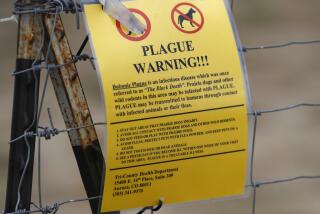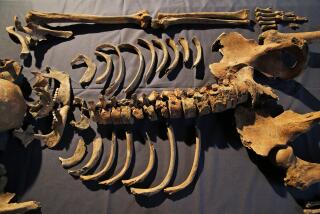India Plague Epidemic Called ‘Limited Outbreak’
- Share via
NEW DELHI — The epidemic of plague that terrified Indians, generated scary headlines and stampeded some nations into weaving a cordon sanitaire around this country last month was, in fact, a “limited outbreak,” U.S. and Russian public health experts reported Tuesday.
After a 10-day investigation, members of the two-nation fact-finding group said they couldn’t cite a single case of transmission of the dread disease from its epicenter in western India to New Delhi, Bombay, Calcutta, Madras or any of India’s other major cities, which they said can be considered “plague-free.”
Armed with the conclusions of the specialists sent here by World Health Organization Director General Dr. Hiroshi Nakajima, the U.N. health agency called for an end to air and sea travel and trade restrictions against India that are still being enforced by some countries.
“We are telling the world the same thing we are telling you: that plague has been controlled in India and it is safe to travel here,” a New Delhi-based WHO executive said at a news conference.
The experts, stressing that their conclusions are tentative because of the brevity of their inquiry, depicted a public health situation in the wretched, crowded, working-class areas of the city of Surat that was potentially catastrophic but was brought under control rather fast.
“Our feelings were, the (pneumonic plague) outbreak was probably fairly limited, with most cases occurring in the first week to 10 days, and most of what was seen after that time was indeed not plague but some of the other diseases that occur there: tuberculosis, malaria, dengue fever, typhoid, enteric fever,” said Dr. David Dennis of the Centers for Disease Control laboratory in Fort Collins, Colo.
The conclusions of the WHO-sponsored team will be welcome news in India, where Prakash H. Mathani, acting president of the Federation of Indian Export Organizations, has claimed that losses in foreign sales of textiles, foodstuffs and other products because of embargoes and canceled orders linked to the plague will top $1.2 billion.
Indian media and some politicians have blasted local and national authorities for not doing enough to stem the spread of disease through the slums of Surat. Panicked at the plague outbreak in the diamond-cutting and artificial-silk-weaving center near the Arabian Sea, an estimated 300,000 to 400,000 fled the city. Dennis said that, in general, the actions of authorities, including widespread distribution of antibiotics that are effective against plague, prevented an “explosive situation” from turning into disaster.
“If it hadn’t been identified and if the public health machinery hadn’t moved into place as rapidly as it did, there could have been many more fatalities,” Dennis said.
Within three days of the identification of the culprit virus, Yersinia pestis , among some of Surat’s residents, 95% of those remaining in the city were taking the antibiotic tetracycline, Dennis said.
The four Americans and two Russians, assisted by WHO personnel, examined blood samples and tissue specimens, scanned hospital records and autopsy reports and interrogated people who had experienced plague-like symptoms.
Dr. Viktor V. Maleev, deputy director of the Central Scientific Research Institute of Epidemiology in Moscow and a clinical specialist in the effects of plague on the human organism, said “as few as 15, 20 people in Surat may have died of plague” rather than the officially reported 52.
“I know it from the documents that Indian doctors gave me,” Maleev explained. “For example, I have a paper here where the cause of death is recorded as ‘suspected plague,’ and the diagnosis is marked ‘not available.’ Or they died on the way to the hospital, and no one conducted an autopsy. Can you say they died of plague? That’s hard to say.”
As recently as two weeks ago, Indian authorities spoke of more than 2,700 suspected cases, but Dennis said many of them proved not to be plague carriers. Only one person stricken with the disease reached a major city, New Delhi, the American official said. But as far as could be determined he gave no one else the disease.
Dennis’ remarks meant that the exodus from the city of more than 2 million had not spread the disease throughout the country, as had been feared.
The exact cause of what Maleev termed “one of the largest outbreaks in recent years of primary pneumonic plague” remained a mystery. The team was only able to find a “circumstantial link” between the happenings in Surat in Gujarat state and a resurgence in August of another form of plague, the bubonic, in the Beed district of neighboring Maharashtra state 240 miles to the southeast.
Dennis cautioned that because of the methods he and his colleagues used and the short time they were at work, their conclusions “may not be set in stone.” He said follow-up studies are necessary, which could take months.
More to Read
Sign up for Essential California
The most important California stories and recommendations in your inbox every morning.
You may occasionally receive promotional content from the Los Angeles Times.










